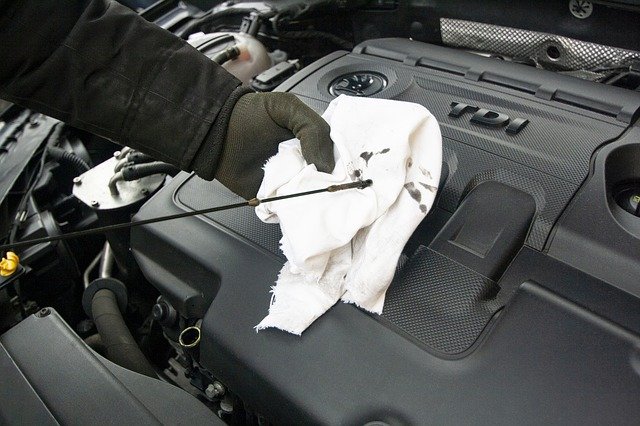
There are ten schools of automotive mechanics in South Carolina. They also have many locations. It's easy to find one near you. Many schools offer multiple degrees, certifications, and scholarships or grants to help you pay for school. While you are studying, you can get a job with a high salary while working. These tips will help you make an informed decision about whether or not to enroll in an auto mechanic program. We've outlined a few options below.
Wake Tech
Raleigh recently opened a new auto facility. A new degree program in collision repairs was also added to the school’s automotive technology program. The college provides diplomas and certificates in many areas, responding to the growing need for certified collision repair technicians. The school currently has only 10 students in its collision repair program, but it plans to increase that number by 16 by June. With this expansion, the school will be able to meet its 80 student enrollment goal.

Complete an online application and attach your high school and college transcripts to begin the process. Please include the major code, your placement test score and name of your advisor. Once you have submitted the application, you must pay the DMV with cash or by mail. The DMV offers many options when applying online and has a payment schedule to fit your schedule. You can also make online payments to save money and time.
Wake Tech students who have completed their auto mechanic training in South Carolina are well-prepared for a career in this field. The school is situated on the way to employment. The school has also opened the Hendrick Center for Automotive Excellence. With this, the school will triple its enrollment in collision repair and automotive technology programs. The new facility includes a laboratory of 7,000 feet that students can use to study collision repair or body shop operations.
Midlands Technical College
Midlands Technical College in South Carolina is an excellent choice for anyone looking for a school of auto mechanics. The college is located in several locations across South Carolina. It has approximately 16,000 students and is the largest two-year college in the state. Students must complete their courses in three years. There are no graduation requirements. Midlands offers a variety of automotive programs. Students can also earn certificates and diplomas online through their online learning system.
Midlands Technical College's automotive mechanic program prepares students for jobs in a wide variety of settings including department store service mechanics and emissions inspectors. They can also become certified in vehicle repair, including motorcycles, trucks, and cars. They can also find jobs in dealerships and specialty shops as well as emissions inspection stations after completing their program. Students will be able to apply their technical knowledge to a variety automotive systems, including engine repairs, suspension, steering, heating and conditioning.

Although you don’t need a South Carolina auto mechanic license, ASE certification is a great way to increase your earnings and career prospects. Many South Carolina auto mechanic schools offer a variety of levels of training from certificate programs to associate degree programs. For example, Central Carolina offers a certificate in automotive technology, while Midlands provides an Associate Degree in automotive technology that requires 84 credit hours. The NATEF has accredited the program, which guarantees a high-quality education and a competitive wage.
FAQ
Is it hard to get work as an auto mechanic?
It can be done. Many garages post their vacancies online. Many people apply simply because they think it might make them feel good. To get your foot in front of the door, try applying for a few positions to see if any accept student applications. You could also ask your family and friends if they know anyone in the industry. They may be happy to recommend someone.
Does it matter where I go to college?
It's not true. There is no difference in the programs offered by colleges for getting into automotive work. Some schools have better programs than others, so you might want to look elsewhere if your goal is something more specialized.
What is the distinction between a mechanic or an automotive technician?
The two are similar but not identical. The mechanic fixes cars while the technician maintains them.
A mechanic needs to be able and quick to use their manual dexterity. A mechanic must be able diagnose and fix problems quickly and accurately.
An automotive technician requires more technical skills than a mechanic. They must be able to read blueprints and use tools such as drills and wrenches.
They should be able safely to perform complex procedures. They must also be familiarized in different types and electrical systems.
They must also understand the interplay of different parts.
As a result, mechanics typically make less than technicians. However, both careers offer great opportunities.
How long is an apprenticeship for an automotive mechanic?
It takes three years to complete an apprenticeship as an automotive mechanic. It includes two years of school and two years as an apprentice. The first year is spent learning all aspects of the trade, including theory, practical skills, and safety procedures. You'll also learn how tools can be used safely and efficiently during this year. After you have completed the first year of training, you will be able to spend an additional year on-the job learning different trades. You will have the opportunity for formal training during these years.
The last year of the program is dedicated to gaining certification and qualifications in the field. These include NVQs (National Vocational Qualifications), which are awarded after passing exams covering specific topics within the industry. Additionally, HNCs are Higher National Certificates that cover general subjects such management, customer service, and business administration. For those interested in pursuing certain trades, City & Guilds certificates are available.
Statistics
- 52% of Mechanics in the United States think their salaries are enough for the cost of living in their area. (indeed.com)
- According to the BLS, the median annual salary for automotive service technicians and mechanics in the United States was $44,050 in May 2020. (uti.edu)
- The U.S. Bureau of Labor Statistics (BLS) reports that the job outlook for automotive service technicians and mechanics is expected to decline by 4% from 2019 to 2029. (indeed.com)
External Links
How To
How to correctly diagnose your vehicle for repairs
You should first examine the symptoms your car is showing to determine if it requires repairs. Next, you can follow these steps in order to diagnose your car.
-
Check engine lights. Inspect the dashboard light indicators. These include the engine lights, the oil pressure gauge and the battery light indicators. The RPM gauge and coolant temperature gauge should also be checked. If any of them have been flashing for several days, it may mean something is wrong with your vehicle.
-
Take a look at the treads. Tire wear can lead to problems in handling and brake performance. You should inspect the treads on your wheel. They should be clean, and they should be smooth. To do this, remove the wheels and take them out. To check the condition of your treads, use a flashlight.
-
You should always monitor the level brake fluid. It is important to keep track of how much brake fluid you have in your car. This will ensure your brakes function properly. Low brake fluid levels can cause brake failure when you apply pressure.
-
The suspension system should be tested. The suspension system in vehicles absorbs vibrations and shocks. It improves control and allows for smoother accelerations or decelerations. It might feel uncontrollable or wobbly if your vehicle is suffering from a suspension problem. If you are unsure if your vehicle is suffering from a suspension problem, put weight on the front and rear axles to check the movement.
-
Examine the steering column. The steering column is used to link the steering wheel with the rest of vehicle's components. Steering columns can be damaged by accidents. You should replace the steering column if it is loose or weak.
-
Observe the exhaust pipe. Exhaust pipes move gases from combustion chamber to atmosphere. Your cabin will be effected if your exhaust pipe cracks or leaks. If your tailpipe bends, it is important to fix it immediately.
-
Take a look under your hood. If you see anything unusual, take a look under the hood. Leakage of fluids in your engine could indicate that it is leaking. In addition, if you notice an unusual smell coming from your engine compartment, you should contact a professional technician.
-
Make sure to check the air filter. Your vehicle's air filter collects dust and debris from the outside environment. Vehicles that have a dirty air filter will not run well. Replace your air filter regularly.
-
Check the fan belt. The fan belt that connects your vehicle to the transmission is called the engine fan belt. If the fan belt is damaged, the engine won’t turn. It's easy to replace the belt. You only need a screwdriver or pliers to replace your belt.
-
Verify the radiator hoses. The radiator hose carries water from the radiator to the engine. It can cause hot liquid to leak onto the engine if it is damaged or cracked. To repair the hose, you will only need to use a pair needle-nosepliers and a wire brush.
-
Check the windshield wipers. Windshield wipers use electricity for snow and rain removal. If they stop functioning, they can leave streaks in your window glass. Simply change the washer oil to fix the problem.
-
The battery cables should be checked. The battery cables supply power to your car's electrical systems. If you are replacing batteries, disconnect the negative cord first. Failure to do so can damage your alternator.
-
Check the headlights. Headlights help you see the road ahead. They can make it difficult to see if they stop working. Check the bulbs to see if they've burned out.
-
Be sure to check the lights. Lights warn other drivers when you approach them at night. One that doesn't work could cause you to be distracted, and possibly lead to an injury.
-
Check your brakes. Before you get in a car accident, your brakes will be slowing down your vehicle. You may lose control of your vehicle and crash if the brakes don't function properly.
-
Make sure to change the oil. Keep your engine lubricated with oil. It helps keep metal parts from getting too worn down. Changing the oil every month is recommended.